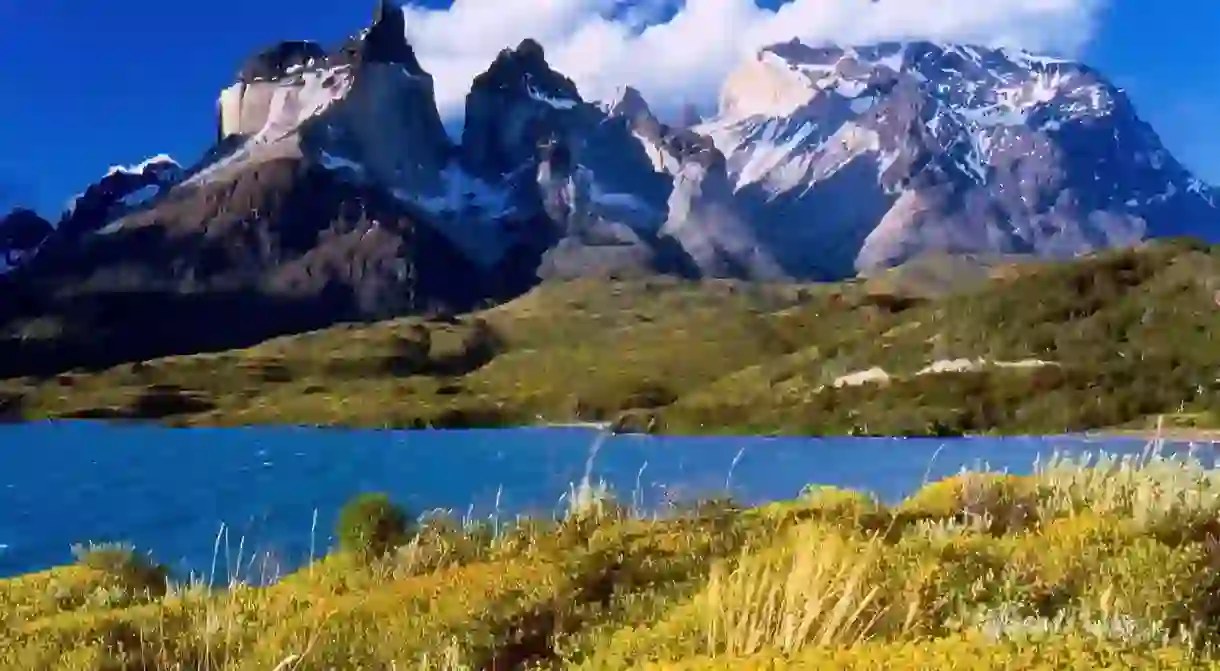10 Things You Should Know Before Hiking Torres del Paine, Chile

Torres del Paine National Park in Chile has been a UNESCO World Biosphere Reserve since 1978, known by locals as ‘El Fin del Mundo,’ or ‘the end of the world.’ There are 250 km (155 miles) of well-marked trails available to hike. Read below to learn how to prepare before embarking on an adventure in this stunning park.
The Best Time to Travel
Temperatures can be very fickle in Patagonia during Chile’s summer months (December to February). In December, the heat results in glaciers melting and more rain. From October to November and February to March, the weather is more consistent and the parks are less crowded. It is not recommended to enter the park in low season (May through September) unless you are an experienced hiker; there are less daylight hours and many of the camp sites are closed.

Choose Your Clothing Wisely
Layers are vital since temperatures rise and fall dramatically. The trek can be muddy and rocky, so invest in a thick pair of socks and a sturdy pair of hiking boots with strong ankle support. Leggings and tops that are made of quick-drying material are practical for spontaneous rainfall. Hiking poles can be extremely useful for any descents.
Don’t Get Too Blown Away
Heavy winds can pick up to a speed of 100km/h. Bring a waterproof bag; rucksack rain covers flap in the wind and can easily blow off, becoming litter in the park. In addition, pack clothes into plastic bags to ensure they stay dry. A sturdy tent that can withstand strong winds is also recommended.

Protect from the Sun
A fully-stocked First Aid Kit is essential. Bring protective headgear, chapstick, sunscreen, and burn cream (in case the sunscreen fails). Don’t be fooled by cloudy skies, the sun can still do its damage. There is also a high probability that you will need blister plasters; we recommend Compeed.
Sleeping Arrangements to Consider
The hotels in Torres del Paine are luxurious and tend to be expensive. If you don’t want to camp, refugios, or large cabins to fit all needs, are a cheaper option. The refugios and camp-sites along the W Trek tend to get booked fast, especially during high season (January and February). It is highly advised to reserve in advance online at sites like Fantastico Sur and Vertice. At the paid campsites you can use the refugio facilities or rent a tent. On the O and Q treks, the only option is to carry a tent.

Arrival and Departure
Buses around Patagonia don’t run often—especially if you want to cross the border into Argentina. Be sure to check the timetable before booking accommodation or campsites to prevent getting stranded. For car renters: the nearest gas station to the park is in Puerto Natales, which is a two-hour drive. If interested in crossing the border into Argentina, be prepared with the necessary documents.
Stock Food and Money
There are no ATMs or money exchanges inside the park, nor shops or supermarkets. Refugios and hotels are the only places to purchase food, albeit at inflated prices. The supermarket in Puerto Natales stocks plenty of camping food and snacks. Powdered food that only requires water is extremely convenient. Avoid cans and packaged food, as they will be heavy and wasteful. Bear in mind that even on an ‘easy’ day, travelers tend to intake more food during a hike than on a normal day.
Be Mindful of the Water
The water is mostly cool and fresh as can be. However, as water trickles down stream, some hikers may ignore park rules and wash themselves or their dirty utensils in the streams, tainting the water. To prevent illness, pack water sterilisers. Better to be safe than sorry.

Beware of Pumas
The park’s behaviour etiquette advises not to get to close to any animals in the park, as your presence can disrupt and harm them. Do not approach or feed them. Remain calm during puma encounters and slowly move backwards while looking at one straight in the eyes. Remain upright to appear larger than the animal.

Carry a Torch
Lastly, don’t forget to bring a torch with spare batteries or a charger. It will really come in handy after dark, either while setting up the tent, navigating around the campsite or taking an after-hours bathroom trip.














